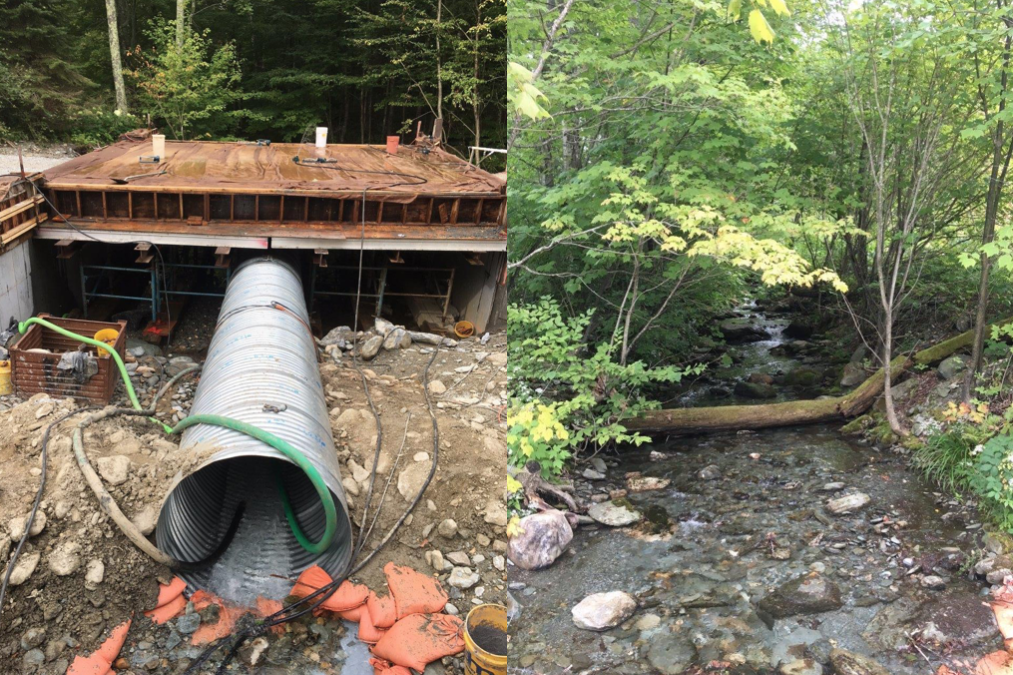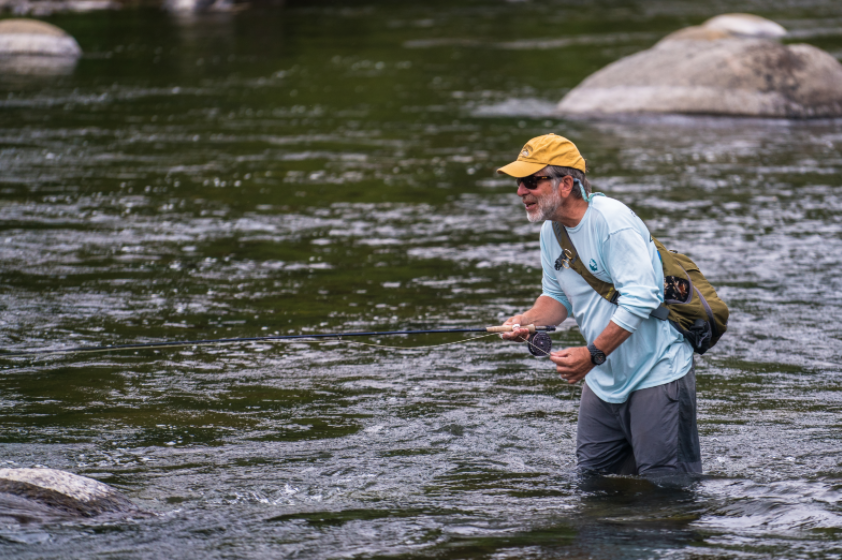Photo by Robin Kadet
Petey jumped in my lap within moments of sitting down. Phil Monahan rescued the little dog when he found him walking alone down a highway. A few things stand out about the Orvis offices in Manchester, Vermont. First, as Petey demonstrated, their offices are very pet-friendly.Second, their street address is “Conservation Way.” This is a company that takes seriously its commitment to the environment. You’ve heard of companies that do 1% for the Planet; an awesome thing, no question. Orvis does 5 percent.
The third thing you notice is the fly tying material. Fur, feathers and thread abound. The “pod,” where Tom Rosenbauer stationed me for the day housed, Petey, Phil, Tom and Tucker Kimball. In the center of the pod was a fly-tying bench that you’d expect to find in the shop of a high-end lodge. Tucker and Phil are the brains behind the Orvis web and social media apparatus. Tom is the guy who wrote The Orvis Flyfishing Guide. This book was my bible and my source of solace when I first learned to fly fish 30 years ago. I would return from an incredibly frustrating day of untying Gordian knots from my line and open Tom’s book. Within an hour, I was soothed, and convinced tomorrow would be different, and I would finally climb that fly fishing mountain.
This was my second time fishing with Tom. It was a strange feeling—perhaps analogous to seeing your priest at a baseball game or at the horse-track. I fished for a while with a prototype Helios 3—which is eerily accurate—and Tom watched from the bank, saying “Man, you’re doing everything right. I don’t know why they aren’t biting.” Eventually, I gave him the rod, and watched. Short cast, pick up, short cast, pick up, set. Release fish. Short cast, pick up, short cast, set. Release fish… You get the idea. All fishermen are not created equal.
Orvis’ commitment to customer service is legendary. Twenty years ago, a broken battery strap smashed the tip of my fly rod to smithereens, and by the time the tide had returned to Brewster Flats on Cape Cod, I had a new rod courtesy of the local Orvis dealer. I think I missed maybe two hours of fishing that day. But it is Orvis’ commitment to conservation that truly sets them apart. For this reason, they won TU’s inaugural Corporate Conservation Partner of the Year Award. At every level of TU, from local chapters to national restoration projects, Orvis is an active partner.
I spent several hours with Orvis leaders talking about how they can best engage their customers as conservation advocates on the need to protect Clean Water rules, and protect special places such as the headwaters of the Smith in Montana, and Bristol Bay, Alaska, from industrial-scale mining. On my way out of the meeting, I ran into Chad Walz, an Orvis employee who is also the president of the Southwestern Vermont Chapter.
As a corporation, Orvis walks the sustainability talk, but it is on the ground where their presence is most felt. I saw a good example of this on the Mettawee River in Vermont. The Mettawee is the lesser-known cousin to the Battenkill, and it can be a tremendous fishery. TU is working with Orvis, the Green Mountain National Forest, private landowners and others to remove six fish-passage barriers on the Mettawee. This will help to reconnect the mainstem of the river to its headwaters in the national forest. Once complete, the restoration will provide access to thermal refuges for brookies during the hot summer months.
The image below shows one culvert replacement, and immediately upstream, six miles of pristine habitat for Brook trout.

The work on the Mettawee it is a model of how we can unite private landowners and incredible conservation partners such Orvis and the Forest Service to help wild and native trout survive—and in fact, thrive—in a changing climate.



